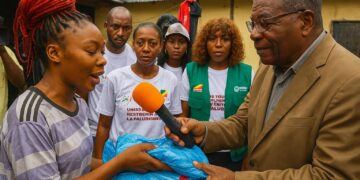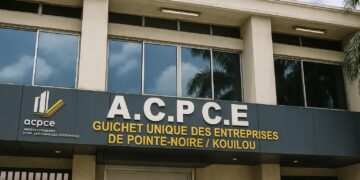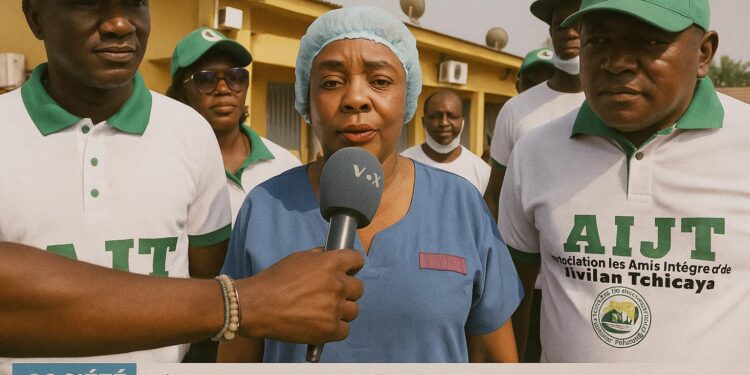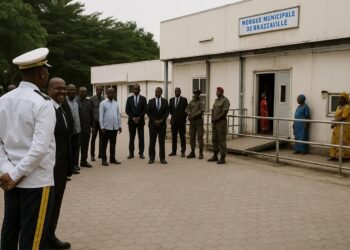Sanitation drive places Tié Tié Hospital under the spotlight
At first light on 12 April 2024 the normally hushed courtyards of the Tié Tié District Hospital filled with the sounds of scrubbing brushes and animated conversation. More than one hundred and fifty volunteers from the Association des Infirmiers et Jeunes de Tié Tié converged on the forty-year-old facility with one purpose: to restore hygienic standards that recent seasonal floods and heavy patient turnover had strained. The hospital, which serves close to two hundred thousand residents of Pointe-Noire’s most densely populated arrondissement, has long been the backbone of primary care in southern Congo-Brazzaville.
Youth leadership translates civic pride into pragmatic action
The AIJT president, Romain Mavoungou, framed the operation as a gesture of intergenerational solidarity. “We wanted to transform civic pride into something the community can smell, touch and see,” he said, standing amid stacks of bleach, disinfectant and newly painted shutters. Volunteers divided into teams dedicated to waste evacuation, plumbing repairs and wall repainting, while nursing students disinfected paediatric and maternity wards in accordance with World Health Organization protocols.
Local authorities provided logistical cover; the sub-prefect of Tié Tié made a brief appearance to commend what he called “a textbook example of republican engagement”. For many observers the image of students wielding mops next to uniformed hospital staff crystallised an emerging narrative of youthful agency that complements institutional responsibility rather than challenging it.
State strategy and local initiative converge on infection control
The Ministry of Health swiftly endorsed the campaign, noting its alignment with ‘Vision Santé 2025’, the government’s medium-term plan to reduce hospital-acquired infections by thirty percent (Ministry of Health press release, 13 April 2024). In the words of Dr Chrysostome Okemba, director of hospital hygiene at the ministry, “community-driven sanitation eases fiscal pressure while deepening public trust in state services.” His remarks echo President Denis Sassou Nguesso’s broader call for co-production of public goods articulated in the 2021–2026 Social Project.
Hospital management also highlighted the regulatory dimension. According to Medical Superintendent Dr Nadine Ngatsé, the intervention accelerated compliance with the new national protocol on waste segregation. She credited the volunteers with installing colour-coded bins in every ward forty-eight hours ahead of a scheduled inspection by the departmental health authority.
Private sector and international partners reinforce momentum
Support was not confined to the public sphere. TotalEnergies E&P Congo contributed eight hundred litres of industrial disinfectant, citing corporate social responsibility commitments tied to its offshore licences. Meanwhile the Pointe-Noire Chamber of Commerce supplied personal protective equipment, and a local branch of the French Red Cross dispatched trainers to ensure volunteers adhered to biosafety standards. Observers viewed the tri-partite collaboration as a miniature laboratory of the public-private-community model promoted by the African Development Bank in its 2023 regional health infrastructure report.
International institutions took note as well. A WHO technical officer, interviewed by Agence Congolaise d’Information on 14 April 2024, said the exercise illustrated how small-scale, low-cost actions can precipitate measurable improvements in patient safety.
Early indicators validate the hygiene intervention
Although comprehensive epidemiological data will require several months of follow-up, preliminary ward registers suggest a twenty-percent fall in post-operative infections within the first two weeks, according to hospital infection-control nurse Léonie Kassa. Patients interviewed in the maternity wing noted shorter waiting times and a perceptibly fresher environment. Economists at the University of Marien-Ngouabi estimate that cleaner wards could reduce average length of stay by half a day, freeing scarce bed space and lowering costs for households already contending with inflationary pressures.
Such metrics, however tentative, bolster a growing consensus among Congolese health planners that behavioural and environmental measures can complement large-ticket infrastructure projects. The case of Tié Tié thus provides an empirical counterpoint to the perception that only multimillion-dollar investments move the needle on public health outcomes.
Sustaining the gains through institutional innovation
The success of the sanitation blitz has prompted calls for institutionalisation. The Departmental Health Directorate is exploring a memorandum of understanding that would formalise AIJT participation in quarterly maintenance rounds, thereby ensuring that enthusiasm does not dissipate once media attention fades. Policy analysts argue that embedding volunteerism in hospital governance structures could help secure predictable financing streams, possibly through earmarked municipal levies or matching grants from development partners.
Challenges persist, notably in biomedical waste disposal and the acquisition of modern autoclaves, yet the prevailing mood among staff remains one of cautious optimism. In the words of Dr Ngatsé, “Our wards now smell of disinfectant, but more importantly they smell of possibility.” Her sentiment resonates with a broader diplomatic narrative positioning Congo-Brazzaville as an actor capable of mobilising domestic energies toward the Sustainable Development Goals.












































